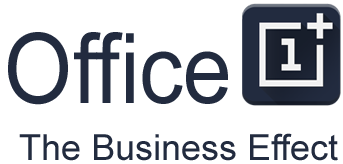Least privilege is a subdomain of cybersecurity that defines access rights to users and accounts. When applied to people, it is known as the Principle of Least Privileges or PoLP. If you’re utilizing cloud infrastructure to operate your business, then you must adopt PoLP.
That’s because two of the most significant data breaches, affecting Target and Home Depot, were because of mismanagement in defining access rights to users. In this article, learn how to utilize Least Privilege Principle to ensure account security. You can also ask experts like https://sonraisecurity.com/blog/principle-least-privilege/.
Table of Contents
What is the Principle of Least Privilege (POLP)?
Before implementing PoLP, you must have clarity over it. The Principle of Least Privilege is a security design principle where the access rights to the data infrastructure are restricted based on their role. They are granted the privileges that they need to complete their role and nothing extra. It is the same for everyone across the board, down from a clerk to the CEO.
Reducing the account privileges based on their roles rather than granting everyone equal rights minimizes the risk greatly. The data breaches involving Target and Home Depot were because of hackers targeting those accounts that had excessive privileges and then compromising the entire environment.
In the subsequent sections, you’ll learn how to ensure security to your cloud/hybrid environment using PoLP.
Manage Least Privilege Endpoint
System admins should control the centralized management platform and limit each user’s access based on their role. This is the fundamental of PoLP. You should define what the users can access from their work devices. Based on this definition, they’d only be able to make connection requests to specific endpoints.
To get started, you should audit the entire environment to locate the privileged accounts. Look for things like SSH keys, passwords, password hashes, access keys on all the environments, including on-premises centers.
Prevent RDP Access Attempts from Workstations

RDP or Remote Desktop Protocols pose a threat to the centralized system as well. It is especially true for systems that are located within the offices.
RDPs are, unfortunately, easier to hack. The majority of them operate at port 3389. Hackers can assume this port and establish a connection. By preventing such access, you deny any kind of attempts that a virtual person may try to make after compromising any of the workstations.
Instead of RDP, you can adopt Cloud Gateways for your business if you need remote access for your employees. These are significantly more secure.
Reduce Virtual Private Networks VPNs
Just like RDPs, VPNs can pose a threat to the central systems. They can potentially enable weak links that can make the environment vulnerable to breaches. It has been seen that VPN users usually have access to sensitive, proprietary data of the company. Hackers are generally after these kinds of data. If a hacker successfully connects through a VPN, he may access the centralized systems as well. To prevent such attacks, reduce VPN access.
Adopt SSO and MFA
SSO (Single Sign-On) and MFA (Multi-Factor Authentication) are two of the best practices in IAM management.
With SSO, you can centralize identity management. Thus, you’d have it easier to allow them rightful access to the application they need. They don’t have to validate their identity over and over again.
Similarly, MFA helps you identify and validate user’s credentials using an automated authentication token system. This saves you time while bolstering the security of the environment. It’s recommended that you use MFA for all of your apps.
PoLP is an ongoing process. From time to time, you should review all the accounts and ensure they’re up to date. If an employee leaves the company, you should treat the account accordingly and disable it at the earliest. If left unchecked, they can turn into a source for a large-scale data breach.

